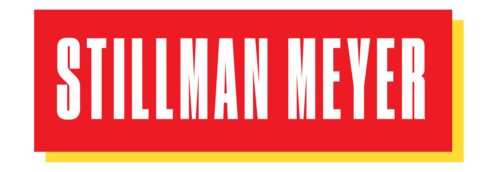Erwin Wurm, Instructions on How to be Politically Incorrect: Inspection (2001)
Erwin Wurm and The Standard
A closer look at the ironic, surreal, inappropriate, hilarious, beautiful world of Austrian artist, Erwin Wurm.
I. No Laughing Matter
It began with a pickle, specifically Wurm's sculpture series, “Selbstportrait als Gurkens” a.k.a. “Self-Portrait of a Cucumber,” which features pickles of all shapes and sizes — short, fat, stubby and curved – each one set triumphantly upon a pedestal. If you're wondering, the cucumber isn’t the only suggestively shaped piece of produce to appear in Wurm’s twenty-year, internationally acclaimed body of work. The banana makes a number of interesting cameos, as do oranges, bagels, apples, and one potentially violated bread roll (by a nun’s fingers, no less).
Leave it to Wurm to provoke us with fruit. His work often revels in it's borderline — some might say over-the-line offensiveness – layered always with a thick icing of wit. If being a great artist requires establishing your own aesthetic and conceptual village, then Wurm is the undisputed mayor of his, which is located directly at the intersection of sublime, ridiculous, sacred, and profane.
Convertible Fat Car (Porche) 2005
“Everybody who comes to see the 'fat car' starts to laugh, but it’s not funny. It’s not meant to be funny. It’s just a fat car with an enormous obesity problem."
Selbstportrait als Gurkens a.k.a. Self-Portrait of a Cucumber (2008)
Erwin poses for in his ode to Maurizio Cattelan: The Artist Begging for Mercy (Dedicated to Mauricio), 2002
If Woody Allen (another cultural mixologist – speaking of his film work only) was a sculptor instead of a filmmaker, one could imagine his work looking something like Wurm’s. But make no mistake; Erwin is no comedian.
“No no, I’m not making jokes, not at all," he explained over the phone from his home in Vienna. "I just take another perspective on our daily lives or on our reality.” He cites his famous Fat Car series from 2003, which consists of to-scale sculptures of sports cars that appear to have been filled with milkshakes instead of gasoline. “Everybody who comes to see the fat car starts to laugh, but it’s not funny. It’s not meant to be funny. It’s just a fat car with an enormous obesity problem and this relates back to our society.”
The Artist Who Swallowed the World (2006)
Anger Bump (2007)
But relates back to our society how? Stephan Berg in his essay, "The Ridiculous Human Tragedy," elaborates: "The layers with which he surrounds the body, both metaphorically and literally, by the extensive fattening-up or thinning-down of people and things, are, like his softened architecture, sculptural metaphors for an existential insecurity about the boundaries of the self, about the question of the relationship between inner and outer..." This is to say, he plays with the forms of people, places and things. He lends them a perspective, a warped reflection, one you might find in a funhouse mirror.
One-Minute Sculpture, 1997
Erwin Wurm's Big Kastenmann at The Standard, High Line
“skin defines the form of the body. Clothing is the second skin. The clothes define the form of our body and the house could be considered the third skin, another layer that protects us as well as reflects moments of the personality."
II. The Big Box Man
Which brings us to "Big Kastenmann," who currently stands guard over the plaza in front of The Standard, High Line, the building itself another big box with legs. Wurm sees them as more than just visually analogous. “Every living creature has a skin, more or less, and the skin defines the form of the body. Clothing is the second skin. The clothes define the form of our body and the house could be considered the third skin, another layer that protects us as well as reflects moments of the personality ... And of course the hotel is a living space as well. It’s a short-term living space, but a living space nonetheless.” Skin creates form. Form becomes structure. Structure becomes style.
Erwin Wurm, Instructions on How To Be Politically Incorrect : Spit in Someone's Soup (2002/3)
Erwin Wurm, Instructions on How To Be Politically Incorrect : Pee on Someone's Rug (2002/03)
III. Regarding a Certain Rug
There's a bit of confusion regarding the new Standard ad "campaign." Firstly, it's not a campaign – at least not in the traditional sense. It is, rather, an artist showcase. Instead of commissioning something new from the artist we selected works from his archives and let them stand on their own – not "x The Standard" but simply, "presented by The Standard." Two series appealed to us: “Instructions on How To Be Politically Incorrect,” (2002/03) and “One-Minute Sculptures,” (1997). They simply, "embody the spirit of the brand,” André explains in The New York Times.
These printed ads are meant to function as a form of public art. “It reaches more people,” Wurm said about art interjected into commercial mass media, or as he calls it, "the modern public space," – something he knows all about from his 44 Suggestions: A Social Sculpture (2008), a series of extremely politically incorrect statements printed in the German newspaper Die Zeit. “People who are not part of the art world are invited to look at it, discuss it, ask questions about it. Maybe they hate it or maybe they love it.”











